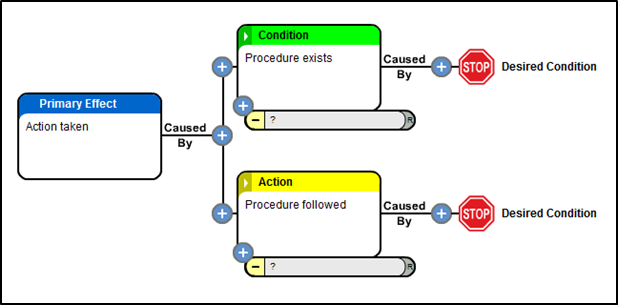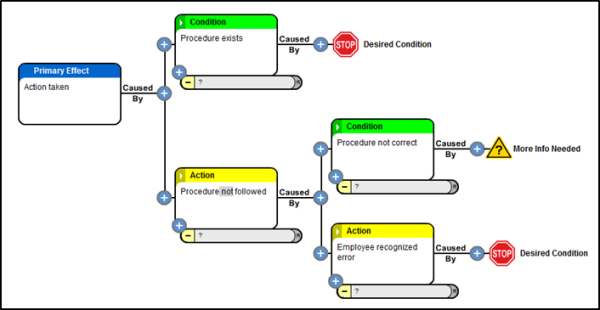By Kevin Stewart

Wouldn’t it be great if problems presented themselves in a manner that would allow
them to perfectly fit a standard root cause analysis (RCA) template or process so that we could just plug in a few details and say “Voilà, here is the answer”?
Or even if they were close enough for us to adapt a standard template to allow us to quickly modify a standard analysis and come up with a reasonable standard answer? Life would be great!
If we look up “template” in the dictionary we get: “something that establishes or serves as a pattern”. As luck would have it, the dictionary has used the following example: “The software includes templates for common marketing documents like pamphlets and flyers”. If you’re reading this article, then most likely you are interested in how the RCA software can provide templates or standards for RCA analysis. In general, I am a big fan of templates; I’ve actually designed some to speed up data entry, or to allow me to quickly identify standard methodologies and information that may be missing. Templates are great tools. But as with all tools, the old phrase applies: If all I have is a hammer – everything looks like a nail. In our context, what I’m concerned about is that – if all I have is RCA - every problem will fit the template! Unfortunately not every problem fits neatly into a template. Just as everything is not a nail.
For large industries this would be fantastic – if someone broke their arm we could fill in a few fields and print out a cause and effect chart of the incident! If this were the case, then it would follow that most broken arms would fit a template - and that we could prevent several of the causes and again fix all or most broken arms. As you already know, this won’t work very well, considering there are thousands of ways to break your arm and many different causes that would need be identified.
Perhaps we aren’t looking for such a prescriptive methodology but just something to help speed things up? Or maybe to give a sense of confidence in what we are doing.
In the scheme of true cause and effect, it is very difficult to make templates for large chunks of an event.
Consider the small example in Figure 1.
Figure 1
.png?width=603&height=283&name=figure_1_(templates_blog).png)
I’ve used “action taken” as a starting point because it could be many things, such as measurement taken, preventative maintenance performed, incision made, etc. This template works well if a procedure exists, as the only two options are: the procedure was followed or not followed. If a procedure exists and it was followed, then the template would indicate that you could use the causes shown. However, given the same starting point, what if the procedure is not followed?
In figure 2, I’ve shown some possible causes of a procedure not followed. However those are already dependent on “the true cause”. Couldn’t the causes just as easily be “procedure known” and “employee decision”? Or “procedure unknown” and “employee not trained”? Or other causes that you may be able to come up with.
Figure 2
-resized-600.png)
So does this mean root cause analysis templates don’t apply? Not necessarily. As you can see from the examples above, you could consider a template where procedures exist or don’t exist, and are followed or not followed, as a form of template for certain items that make sense to use. In cause and effect analysis, these templates are referred to as Causal Elements which will start to show up as you do more and more analysis.
Some examples where templates might work include:
- An action of some kind may be the result of ‘procedure exists’ (or doesn’t exist) and ‘followed’ or ‘not followed’
- Something broken would have to have contact with sufficient force to cause the breakage
- Something out of specification is caused by the specification value and the actual value
- A contact is caused by something moving and something else in the path
- A fall is caused by an action that initiates the fall, gravity, height, and the object that falls
- Any fire is caused by an act that triggers combustion, combustible material, oxygen, and an ignition source
- A quality excursion is caused by the ‘part in error existing’ and ‘missed inspection’ (missed inspection can be due to ‘sampling error’ or ‘not inspected as planned’)
- Personal decision is the result of the ability to act, a reason to act, and absence of consequences of the act
In the above examples, using a template could work because the logic never changes, only the variables.
In summary
In the majority of cases, due to the sheer number of causes to any given problem, using a one-size-fits-all root cause analysis template is just unrealistic. However, in respect to cause and effect analysis, templates may play a role in some cases. This is when the logic is consistent and causal elements can emerge over time and be added to develop robust charts.


